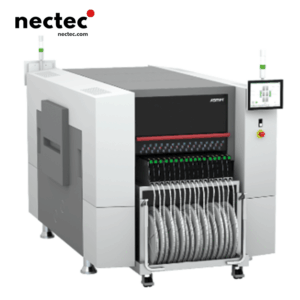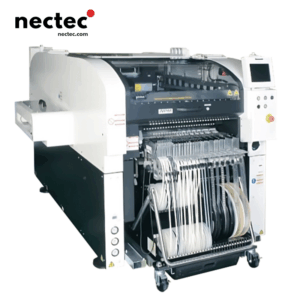In the world of manufacturing, efficiency and precision are paramount. As industries strive to keep up with the increasing demand for high-quality products, advanced technologies are being adopted at an unprecedented rate. Among these innovations are teste di macchine pick and place that have transformed processes across various sectors. In this article, we will explore what teste di macchine pick and place are, how they work, and their significant impact on modern manufacturing.
What Are Pick and Place Machine Heads?
Pick and place machine heads are integral components of automated assembly systems that are designed to handle and manipulate components within a manufacturing environment. These systems utilize robotic arms, equipped with specialized heads, to pick up items from one location and place them at another with exceptional speed and accuracy. The primary applications of these machines are seen in electronics assembly, packaging lines, and even in food production.
How Do Pick and Place Machine Heads Work?
The operation of a pick and place machine head involves several sophisticated technologies and processes. At the heart of its functionality is the integration of:
- Sensori: Machines use a variety of sensors to identify the location and orientation of components, ensuring accurate placement.
- Sistemi di visione: Advanced cameras and imaging systems help in real-time monitoring and alignment of parts, significantly reducing errors.
- Bracci robotici: The robotic arm’s movement is typically programmed to follow specific patterns for optimal efficiency, with degrees of freedom that allow it to reach multiple positions.
- Effettori finali: These are the actual “heads” that grip the components, and they can be customized depending on the shape and material of the items being handled.
The synchrony between these components enables the system to perform tasks rapidly, reducing the time required for assembly and ultimately increasing throughput.
Vantaggi dell'utilizzo di macchine pick and place
Adopting pick and place machines can offer numerous benefits to manufacturers, including:
1. Aumento dell'efficienza
One of the most significant advantages of using a pick and place machine head is the speed at which tasks can be completed. Compared to manual labor, these machines can operate at a much faster rate, allowing for higher production outputs.
2. Miglioramento della precisione
Human error can significantly impact manufacturing processes. Pick and place machines use advanced technology that minimizes errors associated with manual handling, leading to more consistent quality in products.
3. Costo-efficacia
While the initial investment in automation technology may be high, the long-term savings often outweigh the costs. Reduced labor costs, minimal wastage, and increased output result in a lower cost per unit over time.
4. Flessibilità
Modern pick and place machines can be programmed to handle various tasks and components. This adaptability is invaluable in industries that require frequent changes in production lines.
Applicazioni in tutti i settori
The versatility of pick and place machine heads means their applications are vast and varied. Here are some of the main industries where these systems are making a difference:
1. Produzione di elettronica
In the electronics sector, pick and place machines are crucial for assembling circuit boards, placing components precisely and swiftly to meet market demands.
2. Cibo e bevande
In food processing, these machines efficiently handle packaging and sorting tasks, ensuring compliance with hygiene protocols while maintaining speed.
3. Automotive
Automotive manufacturers utilize pick and place technology to enhance assembly line tasks, ensuring that parts are placed correctly and efficiently integrated into vehicles.
4. Pharmaceutical
In pharmaceuticals, automated systems are used to handle delicate items such as vials and tablets, while adhering to strict regulatory standards.
Le sfide delle macchine pick and place
Although pick and place machines offer significant benefits, they are not without their challenges. Key considerations include:
1. Costi iniziali elevati
The upfront costs associated with purchasing and implementing such technology can be daunting for smaller businesses. However, financing options and potential return on investment should be carefully evaluated.
2. Complessità dell'integrazione
Integrating new automated systems into existing production lines can require significant changes and training. Businesses need to plan adequately to minimize disruptions.
3. Manutenzione e tempi di inattività
Regular maintenance is necessary to ensure optimal performance. Ignoring this can lead to unexpected downtime, which can affect production schedules.
The Future of Pick and Place Machine Heads
As technology progresses, one cannot overlook the potential advancements in pick and place machine heads. Innovations such as artificial intelligence and machine learning are set to enhance these systems further. These advancements could lead to smarter robots that can adapt to changing conditions and requirements on the fly.
Moreover, with the rise of Industry 4.0, the integration of IoT (Internet of Things) with pick and place machines could allow for real-time data analytics, predictive maintenance, and enhanced decision-making capabilities, resulting in even more streamlined production processes.
Conclusione
In conclusion, pick and place machine heads stand as a testament to the remarkable evolution occurring within the manufacturing sector. As industries continue to embrace automation and advanced technologies, the role of these machines will become increasingly central to achieving operational excellence. Manufacturers who invest in this technology will likely emerge as leaders in their fields, equipped to meet the demands of an ever-changing market.







